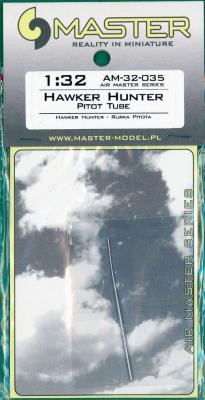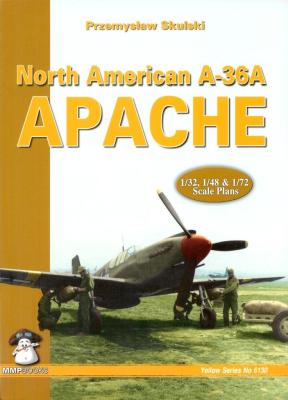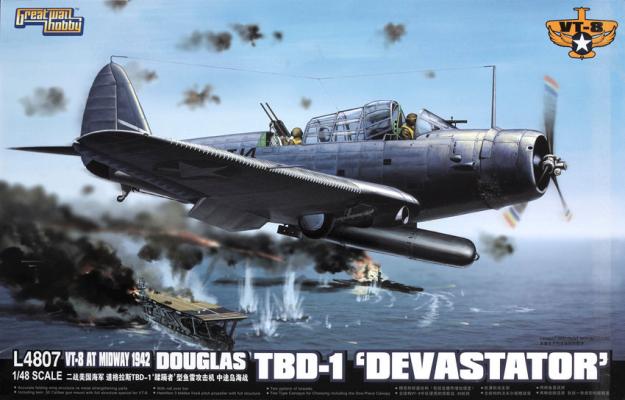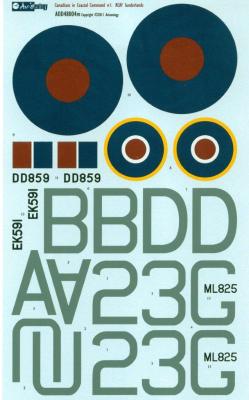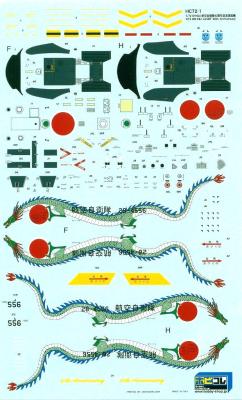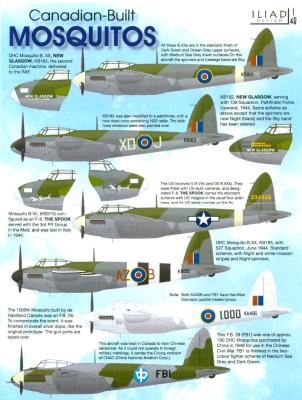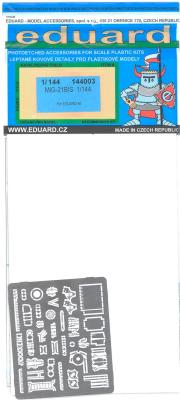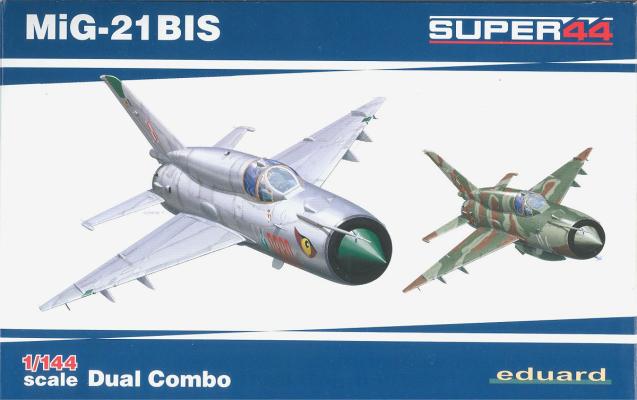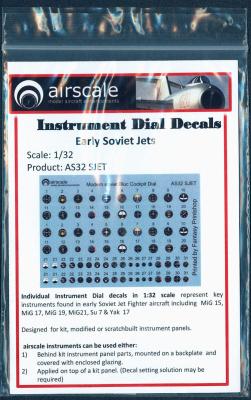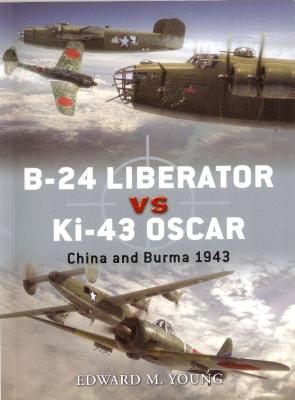Master Model now has covered all the basses when it comes to turned aluminum pitot tubes for Hawker Hunter models by adding one for 1/32 scale kits (currently, that means Revell or Revell of Germany F.6 or FG.9 kits). In this larger scale, the addition of a more accurately proportioned metal pitot tube is almost a must if the builder is striving for accuracy. The photo below of the metal part compared to the injection molded kit part tells the story. Placing it next to the kit part clearly shows show how nicely the tapered Master Model metal looks by comparison.
The Master Model pitot tube can be attached with super glue or epoxy cement. Then, a little filler may be needed to blend the hole in the wing’s leading edge after anchoring the smaller diameter metal tube. The thin metal tube will likely survive an occasional bump or two but, because it is aluminum, it may bend if it is bumped too hard.

